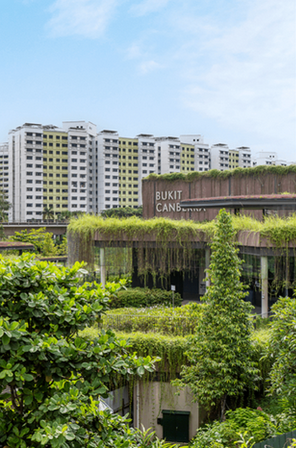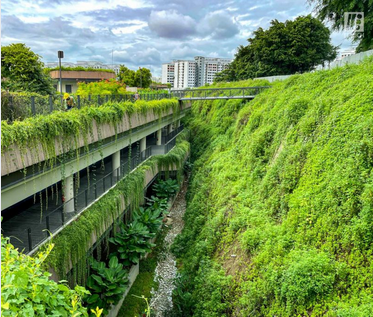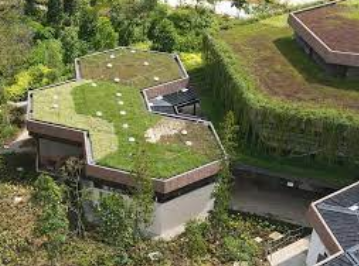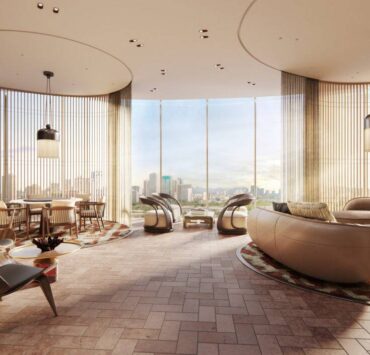Embracing the nature of the tropics: Building for regeneration

The built environment significantly contributes to climate change—from construction methods to the life cycle of buildings.
While the design industry has long focused on reducing harm through energy efficiency and low-impact materials, this is no longer enough. As the climate crisis intensifies, we must shift from merely minimizing damage to actively regenerating the environment.
Beyond sustainability
Regenerative design goes beyond sustainability. It mirrors nature’s ability to renew and restore, creating buildings and spaces that give back more than they take.
This approach is relevant for tropical countries, where the climate is often treated as a challenge to overcome, rather than a resource to embrace.
In the tropics, abundant sunlight, rain, and biodiversity present opportunities for low-energy, climate-responsive design. Passive cooling, daylighting, rainwater harvesting, and using local materials can reduce environmental impact while enhancing comfort and resilience.
Indigenous design traditions also offer valuable lessons, with their emphasis on natural ventilation, shaded spaces, and open layouts.
Moreover, tropical environments are rich in ecosystems that should be protected and integrated into our cities. Green spaces, permeable surfaces, and biophilic design strengthen community well-being and ecological health.

Nature as partner
To move forward, we must educate professionals, support progressive policies, and promote a mindset that sees nature as a partner, not an obstacle.
By embracing the tropical context, we can create spaces that are not just sustainable, but regenerative, inclusive, and deeply connected to place.
Let us design not just to survive, but to thrive.
Who needs to know about regenerative design?
Regenerative design is an approach that seeks to restore, renew, and revitalize our natural and human made ecosystems and communities. Anyone who is concerned about the impact we have on our planet and its resources should know about regenerative design.
This approach can be applied to a wide range of projects, from public policy, industry development, building design and construction, agriculture, food systems, production and consumption of consumable goods, waste management, energy and water management—the list goes on.
So if you are a policymaker, product designer, marketer, technologist, farmer, entrepreneur, economist, architect, engineer, urban planner, environmentalist, or sustainability officer, you should be well-versed in regenerative design principles to create a sustainable future for ourselves and future generations.

Unique opportunities
This philosophy is especially relevant in tropical countries, where the environment offers unique opportunities for low-energy, climate-responsive design rooted in local context.
One standout example is Bukit Canberra in Singapore. Located on a 12-ha wooded site in the Sembawang heartland, this integrated community, sports, and lifestyle hub serves around 100,000 residents.
At its core, the project demonstrates how regeneration can work in practice by placing the natural environment on equal footing with built infrastructure. Rather than flattening the site or replacing nature with concrete, the design preserves the existing hilly terrain and forest ecology, allowing the development to adapt to the land instead of the other way around.

A guiding principle
Sustainability at Bukit Canberra is not an afterthought, but a guiding principle seen in its passive design strategies, biodiversity protection, and community-oriented spaces. By treating the natural landscape as a design asset rather than a constraint, the project reduces impact as well as celebrates and amplifies the tropical character of the site.
Projects like Bukit Canberra remind us of what is possible when we design with, not against, nature. By embracing the richness of the tropical climate, we can create buildings and cities that are not only efficient, but also resilient, inclusive, and regenerative.
In doing so, we move beyond survival to shape built environments that actively help our ecosystems and communities thrive.
The author is a Singapore-based Filipino architect, urban designer, academician, and sustainability strategist. She is the co-founder and managing director of CORE+ Studio and the mind behind frameworks like CORE 360° Systemic Thinking, Cost of Change, and The Sustainability Quadrant
The author is managing partner at CORE+, an institution that pioneers sustainable workflows through advanced digital technology. She is also a co-founder and director of Green Building Experts Pte Ltd (GBuildEx); specializes in sustainable development; and serves as a mentor at the National University of Singapore
















